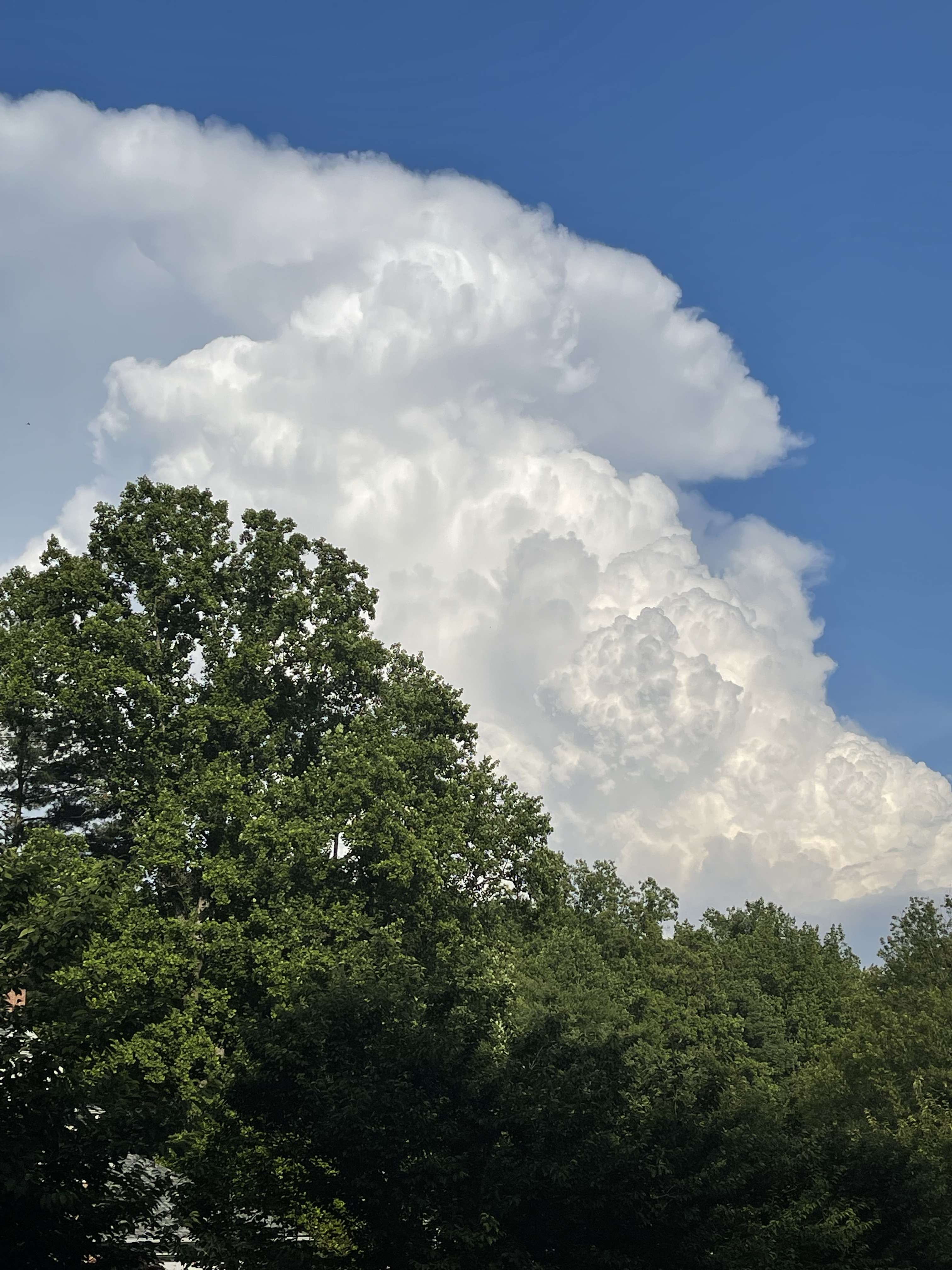-
Posts
44501 -
Joined
-
Last visited
-
Days Won
262
Everything posted by Phil
-

August 2016 Observations and Model Discussion for the Pacific Northwest
Phil replied to Geos's topic in West of the Rockies
Trust me, you don't want to walk outside at 11pm into heat indices still above 100 degrees. It's just not right. -

August 2016 Observations and Model Discussion for the Pacific Northwest
Phil replied to Geos's topic in West of the Rockies
Regarding winter, starting to become clear (IMO) that we'll have a NPAC anticyclone that is both stronger and located poleward versus the typical Niña orientation given the perfectly timed transition into +QBO in conjunction with reduced IO exhaust, I have a strong hunch that this will wind up being the best winter since at least 2008-09 in the PNW. -

August 2016 Observations and Model Discussion for the Pacific Northwest
Phil replied to Geos's topic in West of the Rockies
18z GFS is troughalicious. Maybe tonight is the night the modeling catches on and takes the real plunge. -
Excessive heat warning in effect for tomorrow, excessive heat watch on Sunday. Warning is for heat indices between 110 and 115 degrees, though the usual spots will probably surpass 120 degrees.
-
Glad I'm missing this heatwave. Looks like heat indices maxed out round 110 degrees today, +/- 5 degrees around the DCA/BWI corridor today. Home station hit 98/77, for a heat index of 113 degrees. DCA looks to have reached 99 degrees this afternoon, which tied a record high for the date (though that's low hanging fruit right there). Heat index maxed at 110 degrees.
-

August 2016 Observations and Model Discussion for the Pacific Northwest
Phil replied to Geos's topic in West of the Rockies
Maybe Tim is onto something w/ the Canadian picking up on pattern changes before other guidance. If the retrogression does occur (as I'm expecting it to), yesterday's 12z Canadian was once again the first to sniff it out, similar to how it sniffed out the slow ULL. -
Late August is going to make or break most of these forecasts. All hinges on whether we follow climo under the upcoming regime or we pull a fluke. Retrogression favored in the forcing/pattern analogs. DCA cranking it up again today, 99/75 intra hour high currently..
-

August 2016 Observations and Model Discussion for the Pacific Northwest
Phil replied to Geos's topic in West of the Rockies
12z GFS likes the retrogression idea in the long range. FWIW, looks exactly like pattern analogs for Niña backgrounds w/ deamplifying WPAC forcing under weakening MJO dominance in face of lowfreq assertion. -
00z ECMWF has a heat index of 120 degrees @ DCA on Saturday. Would be the highest heat index since the July 2011 heatwave, which delivered an hourly reading of 121 degrees, with an intra-hour reading of 125 degrees.
-

August 2016 Observations and Model Discussion for the Pacific Northwest
Phil replied to Geos's topic in West of the Rockies
Agree with the bolded. I guess the question is, why? Could be a number of factors. -

August 2016 Observations and Model Discussion for the Pacific Northwest
Phil replied to Geos's topic in West of the Rockies
Yeah, once east/downwind of the Appalachians, on the typical W/NW winds there's a gust maximum on the Piedmont Slope from the Winchester/Martinsburg corridor to the Germantown/Manchester corridor. Almost all the trees there are shaped to W/NW winds and lean heavily to the E/SE. -

August 2016 Observations and Model Discussion for the Pacific Northwest
Phil replied to Geos's topic in West of the Rockies
Was about to comment on that. Seems we generally lag you guys as far as the seasonal progression is concerned. -

August 2016 Observations and Model Discussion for the Pacific Northwest
Phil replied to Geos's topic in West of the Rockies
We rarely get strong onshore winds though, except during hurricane landfalls. Different story from NYC-northward, though. Our big windstorms tend to occur on the back quadrants of deep lows undergoing cyclogenesis to our north, with downsloping off the Appalachians enhancing the gusts along/west of the Fall Line with a wind gust maximum along/just east of Parrs ridge. -

August 2016 Observations and Model Discussion for the Pacific Northwest
Phil replied to Geos's topic in West of the Rockies
I think it has more to do with wavelengths juxtaposed on the thermal gradients/TWLs. Otherwise you'd expect more severe windstorms in January-March. We get much stronger windstorms here the February-April period vs the November-January period. -

August 2016 Observations and Model Discussion for the Pacific Northwest
Phil replied to Geos's topic in West of the Rockies
Actually, some of the strongest gusts around here (outside the ridge tops) occur inland, downwind of the mountains, vs the coast. West of the Fall Line, we typically get several 60-70mph wind events through a typical November - April period. East of the Fall Line (DC metro, etc), peak gusts are typically ~10mph weaker. -

August 2016 Observations and Model Discussion for the Pacific Northwest
Phil replied to Geos's topic in West of the Rockies
Yeah, I bet sometime within the next 5 days (much like what happened in late July) the models will jump to the retrogression idea for late August. Will probably be a significant shift within day 10, maybe within day 7. -

August 2016 Observations and Model Discussion for the Pacific Northwest
Phil replied to Geos's topic in West of the Rockies
I suspect that ridge in the extended range will wind up retrograding offshore, even more-so than depicted by the clown range 12z GFS. No support in August pattern analogs (Niña backgrounds w/ intraseasonal WPAC forcing undergoing deamplification) for a ridge bridge or +PNA like that. Plenty of retrogressions, though.. -

August 2016 Observations and Model Discussion for the Pacific Northwest
Phil replied to Geos's topic in West of the Rockies
Heat indices in the mid-90s? Eskimos and Polar Bears are probably laughing their arses off right now. -

August 2016 Observations and Model Discussion for the Pacific Northwest
Phil replied to Geos's topic in West of the Rockies
Wouldn't surprise me. Haven't actually run the numbers on October, so don't know what the ratio is, but I'd guess it's at least on par with September's. -

August 2016 Observations and Model Discussion for the Pacific Northwest
Phil replied to Geos's topic in West of the Rockies
Yeah, PNW Arctic blasts during Niño winters are almost always focused in the first half of DJF, with the highest concentration focused in December. Also, FWIW, the vast majority of said Niño blasts occurred during -QBO winters. -

August 2016 Observations and Model Discussion for the Pacific Northwest
Phil replied to Geos's topic in West of the Rockies
So, heat advisories in Portland for mid 90s highs? That criteria is kind of silly if you ask me. Heat indices probably won't even approach 100 degrees, so pretty much everyone should manage quite easily. -

August 2016 Observations and Model Discussion for the Pacific Northwest
Phil replied to Geos's topic in West of the Rockies
Since 1950, Niñas have produced cool Septembers in the PNW more frequently than Niños by almost a 4-1 margin. So yeah, it's not even close, actually. -
Glad I'm not home to experience the mid-August dewpoint maximum. Lools like 95/75 was reached at the home station before 1pm today, so that'd suggest an upper 90s high this afternoon. Meanwhile, currently 90/79 down here on the Golden Isles beaches, however, the sea breeze makes it quite comfortable on the beach itself.
-

August 2016 Observations and Model Discussion for the Pacific Northwest
Phil replied to Geos's topic in West of the Rockies
There are already papers being published on the "unprecedented" nature of the 2015-16 QBO. Solid read: http://onlinelibrary.wiley.com/doi/10.1002/2016GL070373/abstract -
There were likely stronger hurricanes before the satellite era, one notable storm being the Florida Keys Labor Day hurricane which is thought to have produced winds in excess of 200mph, literally "sand blasting" people to death (flesh ripped off, gross stuff). Another storm is thought to have landfalled in NJ awhile back (forget the year, ages ago) which based on old landscape/damage surveys is also thought to have produced winds up to 200mph, extraordinary for that latitude.


